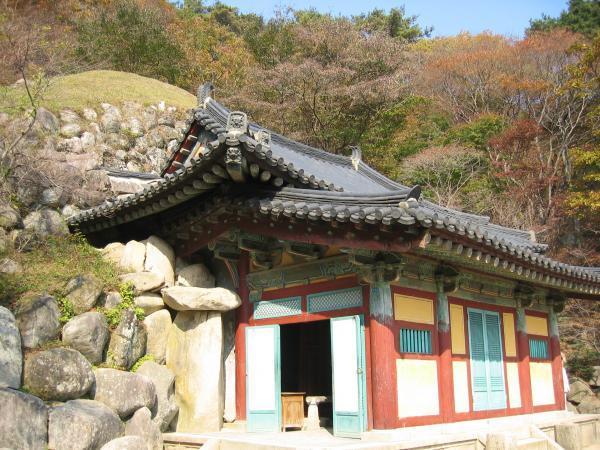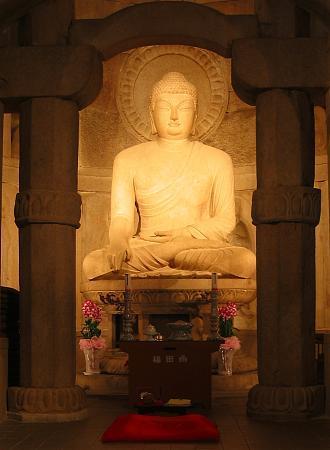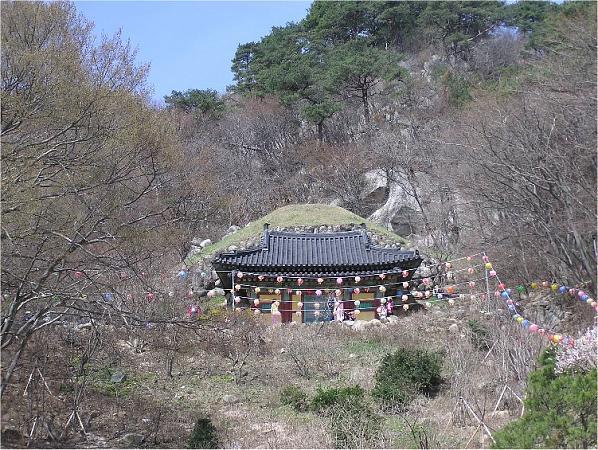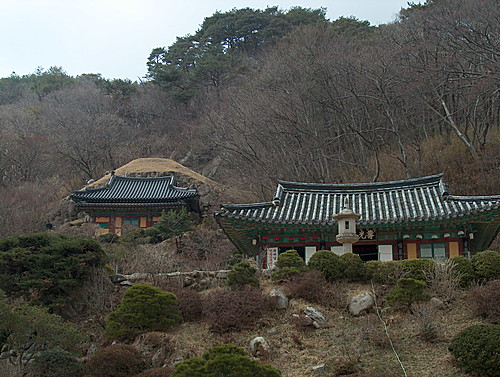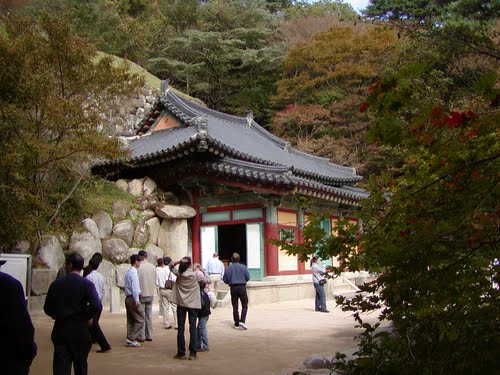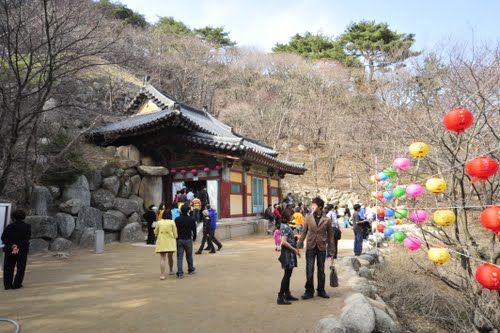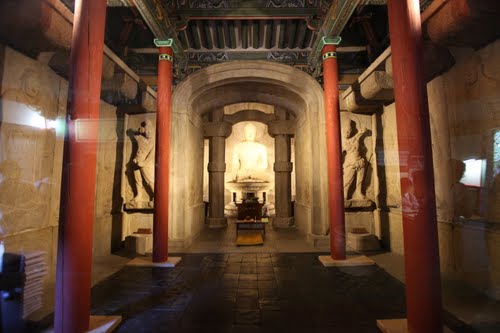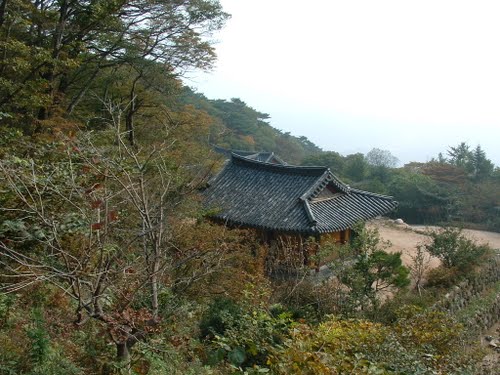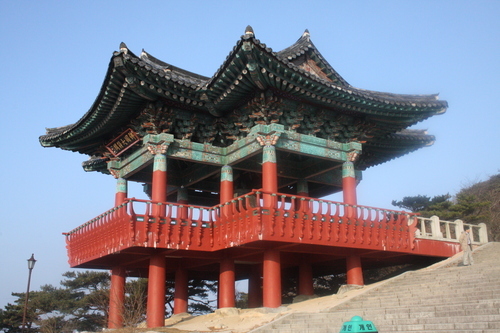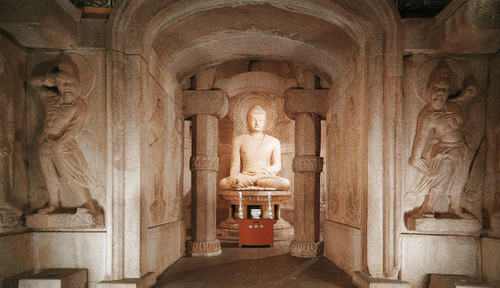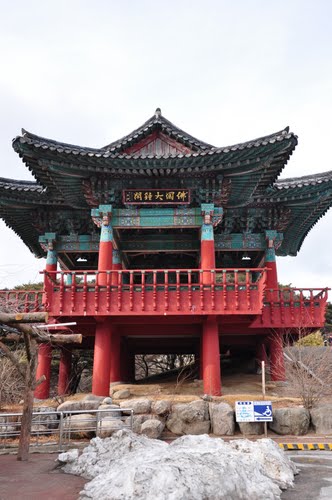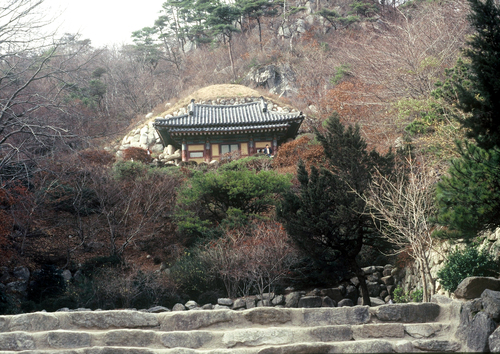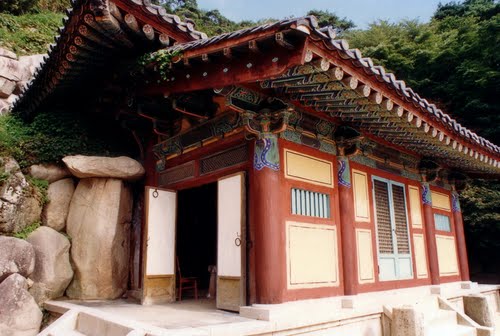The Seokguram Grotto is a hermitage and part of the Bulguksa temple complex. It lies four kilometers east of the temple on Mt. Tohamsan, in Gyeongju, South Korea. The grotto overlooks the East Sea and rests 750 meters above sea level. In 1962, it was designated the 24th national treasure of Korea. In 1995, Seokguram was added to the UNESCO World Heritage List together with the Bulguksa Temple. It exemplifies some of the best Buddhist sculptures in the world.
It is said to have been built by Gim Daeseong and originally called Seokbulsa. Construction began in 742 when Gim Daeseong resigned his position in the king's court or in 751, the 10th year of the reign of King Gyeongdeok of Silla. This time period was the cultural peak of Unified Silla. The grotto was completed by the Silla court in 774, shortly after Gim's death. An old legend stated that Gim was reincarnated for his filial acts in his previous life. The legend relates that the Bulguksa Temple was dedicated to Gim’s parents in his present life while the Seokguram Grotto was dedicated to Gim's parents from a previous life.
It is now one of the best known cultural destinations in South Korea. A viewing of the sunrise over the sea, which is visible from near the seated Buddha's perch, is especially popular.
Architecture
India began a tradition of carving the image of Buddha in stone, holy images, and stupas into the cliff walls and natural caves. This practice was transferred to China and then Korea. The geology of the Korean Peninsula, which contains an abundance of hard granite, is not conducive to carving stone images into cliff walls. Seokguram is an artificial grotto made from granite and is unique in design. The small size of the grotto indicates that it was probably used exclusively by the Silla royalty.
The grotto is symbolic of a spiritual journey into Nirvana. Pilgrims were to start at Bulguksa or at the foot Mt. Tohamsan, a holy mountain to the Silla. There was a fountain at the entrance of the shrine where pilgrims could refresh themselves. Inside the grotto, the antechamber and corridor represented the earth while the rotunda represented heaven.
The basic layout of the grotto includes an arched entrance which leads into a rectangular antechamber and then a narrow corridor, which is lined with bas-reliefs, and then finally leads into the main rotunda. The centerpiece of the granite sanctuary is a Buddha statue seated in the main chamber. The identity of the Buddha is still debated. The Buddha is seated on a lotus throne with legs crossed. The Buddha has a serene expression of meditation. The Buddha is surrounded by fifteen panels of bodhisattvas, arhats and ancient Indian gods in the rotunda and is accompanied by ten statues in niches along the rotunda wall. The main hall of Seokguram houses a Bojon statue Bodhisattva and his disciples. Forty different figures representing Buddhist principles and teachings are in the grotto. The grotto was built around these statues in order to protect them from weathering. The ceiling of the Seokguram grotto is decorated with half moons, the top is decorated with a lotus flower. Silla architects used symmetry and apparently employed the concept of the golden rectangle.
The grotto is shaped by hundreds of different granite stones. There was no mortar used and the structure was held together by stone rivets. The construction of the grotto also utilized natural ventilation. The dome of the rotunda is 6.84 meters to 6.58 meters in diameter.

